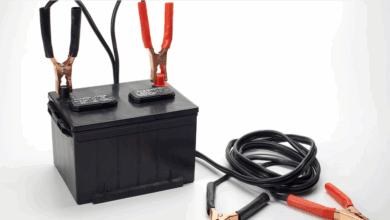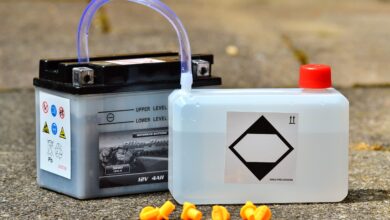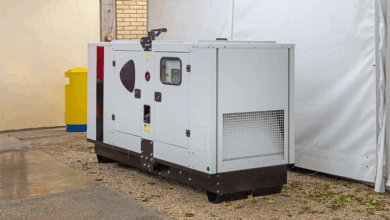Don’t Backfeed! Safely Hook Up Your Generator to Your House

Don’t Backfeed! Safely Hook Up Your Generator to Your House
The lights flicker and die. The hum of the refrigerator stops. Another power outage descends, plunging your home into darkness and threatening to ruin your frozen food. If you’re like many homeowners, you’ve considered getting a portable generator to weather these storms. Generators can be lifesavers, keeping essential appliances running and providing light when the grid goes dark.
However, connecting a generator to your home’s electrical system isn’t as simple as plugging it into a wall socket. In fact, doing so is incredibly dangerous and potentially deadly – for you, your neighbors, and the utility workers trying to restore power. This dangerous practice is known as backfeeding, and understanding why it’s a critical safety hazard is the first step toward powering your home safely during an outage.
What is Backfeeding and Why is it So Dangerous?
Backfeeding occurs when you connect a generator in a way that allows its power to flow out of your house and back onto the utility company’s power lines. It typically happens when someone plugs a generator directly into a standard wall outlet using a cord, often incorrectly referred to as a "suicide cord" (a cord with male plugs on both ends).
Here’s why backfeeding is a life-threatening mistake:
- Danger to Utility Workers: When the power goes out, utility crews assume the lines they are working on are de-energized. Backfeeding a live current from your generator onto the grid can electrocute or kill a worker who is repairing lines, unaware they are energized. This is arguably the most severe risk.
- Danger to Neighbors: The power you push back onto the grid doesn’t stop at the utility pole. It can travel down the lines and potentially energize homes nearby, posing a shock or fire hazard to people in those houses.
- Damage to Equipment: Backfeeding can cause severe damage to your generator, your home’s electrical system, and connected appliances. The generator’s power output isn’t synchronized with the grid, and the sudden surge or mismatch can fry sensitive electronics or even start electrical fires.
- Fire Hazard: Improper wiring and overloading circuits during backfeeding significantly increase the risk of electrical fires within your home.
- Legal Consequences: Backfeeding is illegal in most, if not all, jurisdictions. If you cause injury, death, or property damage due to backfeeding, you can face severe legal penalties, including fines and criminal charges.
In short, backfeeding bypasses all the safety systems built into your home’s electrical panel and the utility grid, turning a potentially helpful backup power source into a grave hazard.
The Wrong Way: The "Suicide Cord" and Outlet Plug-in
Let’s be absolutely clear: Using a cord with two male ends (a "suicide cord") to plug your generator into a wall outlet is perhaps the most dangerous electrical practice imaginable.
- Exposed Live Prongs: When one end of the cord is plugged into the generator, the prongs on the other end become lethally energized before being plugged into the wall. Simply bumping against or touching these exposed prongs can be fatal.
- Direct Backfeed: Plugging this live male end into a wall outlet directly connects your generator’s output to your home’s internal wiring, bypassing the main breaker and sending power back onto the grid.
Similarly, plugging any cord from your generator into a standard wall outlet, even if it somehow bypasses the exposed prong issue (which is unlikely with DIY methods), is still backfeeding. Your home’s system isn’t designed to receive power this way, and the connection isn’t isolated from the utility lines.
The ONLY Safe Ways: Transfer Switches and Interlock Kits
The fundamental principle of safely connecting a generator to your house is isolation. You must physically or mechanically ensure that your home is completely disconnected from the utility grid before you connect and turn on your generator. Only two methods approved by the National Electrical Code (NEC) and favored by electricians achieve this necessary isolation:
-
Manual Transfer Switch:
- What it is: A transfer switch is a dedicated electrical subpanel or switch mechanism installed near your main electrical panel.
- How it works: It has different positions – one for "Utility" power and one for "Generator" power. When the utility power goes out, you manually flip the switch (or switches) to the "Generator" position. This action mechanically disconnects your house from the utility lines before connecting it to the circuits you’ve designated to run off the generator. You then start your generator and connect it via a dedicated inlet box outside your home, which is wired to the transfer switch.
- Advantages: Provides complete isolation, often comes as a pre-wired panel for specific critical circuits (like the furnace, refrigerator, some lights), making load management easier.
- Disadvantages: Typically more expensive to purchase and install than an interlock kit. Usually powers only selected circuits unless you install a large, more costly whole-house transfer switch. Requires professional installation.
- Generator Interlock Kit:
- What it is: A mechanical sliding plate or assembly installed directly onto your main electrical panel.
- How it works: The interlock kit physically prevents the main utility breaker from being in the "ON" position at the same time as the dedicated generator breaker. When the power goes out, you turn OFF the main utility breaker. Then, you slide the interlock plate, which physically blocks the main breaker from being turned back ON. With the plate in place, you can then turn ON the generator breaker. When utility power is restored, you reverse the process: turn OFF the generator breaker, slide the interlock plate back, and turn ON the main utility breaker.
- Advantages: Often a less expensive option than a transfer switch, allows you to potentially power any circuit in your panel (though you must manually manage the load based on your generator’s capacity).
- Disadvantages: Requires careful manual load management (you must ensure you don’t turn on more circuits than your generator can handle). Requires a dedicated generator breaker and a wired-in inlet box outside your home. Requires professional installation.
Generator Inlet Box: The Safe Connection Point
Regardless of whether you choose a transfer switch or an interlock kit, you will need a generator inlet box. This is a weather-resistant box mounted on the exterior of your house with a specific, high-amperage plug receptacle. It is wired directly to either your transfer switch or the dedicated generator breaker in your main panel (which is controlled by the interlock kit).
This inlet box is where you plug your generator using a properly rated, heavy-duty generator cord. It provides a safe, designated point for power entry that is correctly integrated with your isolation system (transfer switch or interlock kit), preventing dangerous backfeeding.
Professional Installation is Non-Negotiable
Installing a transfer switch or an interlock kit involves working inside your main electrical panel, dealing with high voltage, and ensuring compliance with local electrical codes. This is not a DIY project. Attempting to install these systems yourself without proper training, tools, and knowledge is incredibly risky and can lead to improper function, code violations, and severe electrical hazards.
Always hire a qualified, licensed electrician to evaluate your needs, recommend the appropriate system (transfer switch or interlock kit) based on your generator size and desired circuits, and perform the installation. They will ensure the system is installed safely, correctly, and in compliance with all applicable codes.
Beyond Connection: Safe Generator Operation
Even with a safe connection method installed, general generator safety during operation is vital:
- Location: ALWAYS operate generators outdoors and far away from windows, doors, and vents to prevent deadly carbon monoxide fumes from entering your home.
- Fueling: Only refuel a generator when it is shut off and cool.
- Extension Cords: For items plugged directly into the generator’s outlets (not through your house’s system), use heavy-duty, outdoor-rated extension cords with sufficient gauge for the load. Do not run cords under carpets or through doorways where they can be pinched or damaged.
- Load Management: Understand your generator’s capacity and avoid overloading it. Cycle appliances (don’t turn everything on at once).
FAQs
-
Q: Can’t I just run heavy-duty extension cords from the generator to my essential appliances?
A: Yes, this is a safe way to use a generator, but it’s inconvenient. You plug appliances directly into the generator’s outlets using appropriate extension cords. This bypasses your home’s wiring system entirely, so there’s no risk of backfeeding. It’s safe for individual appliances but impractical for things like central heating/cooling, well pumps, or hardwired lights. -
Q: Is a transfer switch better than an interlock kit?
A: Neither is inherently "better"; they serve the same core purpose of preventing backfeeding but in slightly different ways. Transfer switches are often preferred for powering a fixed set of critical circuits and offer clear load management within that subpanel. Interlock kits are typically less expensive and offer the flexibility to power anything in your main panel (though you have to manage the load manually). The best choice depends on your budget, generator size, and which circuits you need to power. Your electrician can help you decide. -
Q: My friend said they just plug their generator into an outlet. Why is that bad?
A: That is backfeeding and is extremely dangerous for all the reasons listed above – it risks electrocuting utility workers, neighbors, damaging equipment, and causing fires. It is illegal and potentially fatal. -
Q: Can I install a transfer switch or interlock kit myself?
A: Absolutely not. This requires working with high-voltage electricity within your home’s main electrical panel. It is complex work that must be done by a qualified, licensed electrician to ensure safety and compliance with electrical codes. - Q: What’s a "suicide cord"?
A: A "suicide cord" is a dangerous, homemade cord with male plugs on both ends, intended to plug a generator into a wall outlet. It’s called this because of the lethal risk from exposed, energized prongs and the extreme backfeeding hazard it creates. Using one is reckless and potentially deadly.
Conclusion
A portable generator can provide invaluable peace of mind and comfort during a power outage. However, the dangers associated with improper connection are severe and unforgivable. Backfeeding is not just ill-advised; it is a reckless act that risks lives and property.
Never attempt to power your home by plugging a generator directly into a wall outlet or using dangerous, unapproved cords. The only safe and legal methods to connect a generator to your house’s electrical system are through a professionally installed transfer switch or interlock kit paired with a dedicated generator inlet box.
Invest in your safety and the safety of others. Consult a qualified, licensed electrician to discuss your backup power needs and have a proper, code-compliant connection system installed. When the power goes out, you’ll be prepared to safely power your home without putting anyone at risk. Don’t backfeed – choose safety first.




![How to Bypass CO Sensor on Generator – [4-Step Safety Guide]](https://www.generator411.com/wp-content/uploads/2025/08/co-sensor-on-generator-390x220.png)